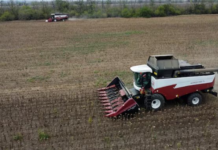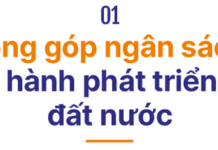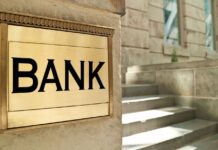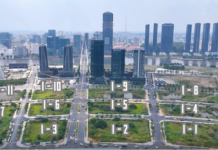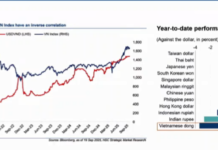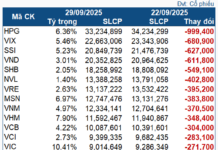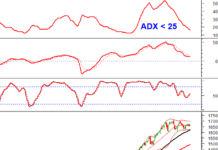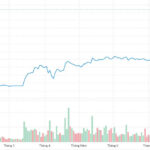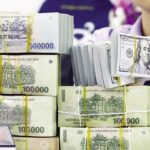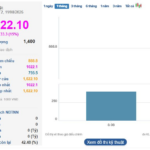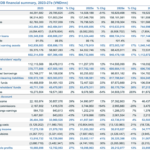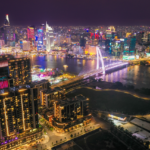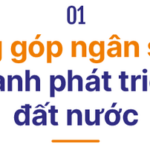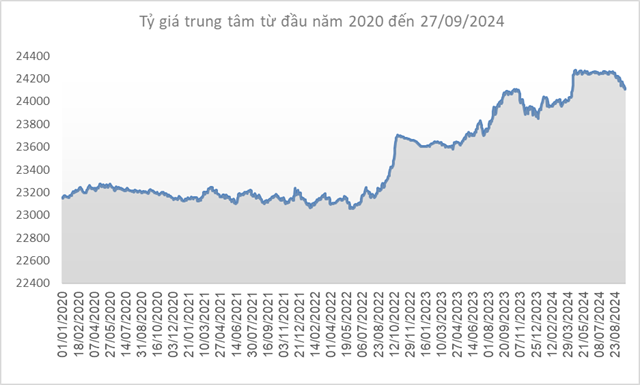Boosting Profit from Non-Interest Income
The financial reports of commercial banks show that 23 out of 27 banks have increased their profits. Among them, 8 banks reported pre-tax profits of over VND 10 trillion, and including Agribank (not yet listed) as the 9th bank. Leading the pack are the “Big 4” state-owned banks: Vietcombank takes the top spot with nearly VND 21,900 billion in pre-tax profit, up about 5% over the same period last year.
Following closely is VietinBank with VND 18,920 billion, up 46%; BIDV with VND 16,038 billion, up 37%; and Agribank with VND 13,000 billion. Private joint-stock commercial banks such as MBBank, Techcombank, VPBank, ACB, and HDBank recorded profits ranging from VND 10,000 to 15,900 billion, with MBBank and Techcombank surpassing Agribank, posting nearly VND 15,900 billion and VND 15,135 billion in profits, respectively.

Smaller-scale joint-stock commercial banks also witnessed impressive profit growth of 30%-80% compared to the same period, including SHB, Sacombank, Seabank, KienlongBank, and PGBank. Notably, some banks experienced exponential growth, such as NCB, with a staggering 6,347% increase and a profit of VND 463 billion, mainly from interest income due to successful restructuring and increased new lending according to plan; and ABB with a 187% surge compared to the previous year, earning VND 1,672 billion in pre-tax profit.
The profit picture for the first half of the year reveals that, in addition to income from credit activities, non-interest income has been one of the brightest spots in the banking industry. In fact, many banks have reported a decrease in revenue from lending activities but have managed to turn a substantial profit from non-interest income streams.
For instance, Vietcombank’s growth in profit was driven by non-interest income. Apart from a more than 43% decrease in pure service profit, all other activities of Vietcombank witnessed profit growth of over 50%, especially in other business activities, which tripled compared to the same period last year, bringing in more than VND 1,800 billion.
ACB, despite a modest increase in total operating income compared to the previous year and a 5.7% decrease in pure interest income, saw a nearly 40% increase in non-interest income thanks to strong performance in foreign exchange, securities investment, and bad debt recovery. LPBank experienced a 1.3% decrease in pure interest income but a 17.3% increase in non-interest income. SHB’s pure interest income surged by 53%, while its non-interest income skyrocketed by 163%.
HDBank, which achieved a breakthrough in its semi-annual profit, surpassing VND 10,000 billion for the first time and setting a new record, attributed its success not only to a 15.8% increase in pure interest income but also to a remarkable surge in non-interest income, with payment activities, digital banking, and foreign exchange witnessing a 210% growth compared to the same period last year.
ABBank’s impressive performance was also due to improved profit from services, reaching VND 431 billion, five times higher than the previous quarter, and a staggering increase of 894.5 billion VND in pure profit from other activities, 13 times higher than the previous year…
Is it due to a reduction in “cushion” reserves?
Firstly, a positive contributor to the profits is the significant recovery of non-performing loans (NPLs) by many banks, leading to a sharp increase in reversed provisions, thereby boosting profits. For example, Agribank recovered nearly VND 6,000 billion from previously written-off loans, an increase of over 91%.
At Techcombank, more than 66% of profits came from previously written-off loans. For LPBank, income from previously written-off loans increased by 2.3 times compared to the same period in 2024, causing a 2.2-fold increase in the bank’s pure profit from other activities. Similarly, KienlongBank’s profit from other business activities tripled compared to the same period last year, with a 2.8-fold increase in recovered written-off NPLs.
However, the financial reports of the banks also indicate that to maintain high profit growth in the first half of this year, many banks had to accept a reduction in their “cushion” reserves. The “Big 4” state-owned banks lead in terms of NPL coverage ratio, but only Agribank increased its NPL coverage ratio in the first half of this year to 148.6%, up 16.8% from the beginning of the year.
Vietcombank, despite having the highest NPL coverage ratio in the system at 213.8%, has seen a decrease compared to 223.3% at the end of 2024. VietinBank’s ratio dropped from 170.7% to 134.8%, and BIDV’s ratio decreased from 133.7% to 88%.
The group of private joint-stock commercial banks showed a similar trend: MBBank’s NPL coverage ratio as of June 2025 was 88.9% compared to 92.3% at the end of last year; HDBank’s ratio decreased from 68% to 47.1%; SHB’s ratio fell from 64% to 58%; LPBank’s ratio dropped from 83.3% to 75%… Some banks have very low NPL coverage ratios, such as VIB at 37.16% and Eximbank at 41%…
Experts suggest that the reduction in “cushion” reserves by banks to increase profits is due to the resolution of loans that were restructured or deferred during the COVID-19 pandemic. Therefore, banks, especially the “Big 4,” do not need to maintain an excessively high NPL coverage ratio.
According to Mr. Dinh Quang Hinh, Head of Macro and Market Strategy at VNDIRECT, the passage of the Law on Credit Institutions (amended) and the legalization of important provisions in Resolution 42 of the National Assembly on pilot bad debt handling will help banks speed up capital recovery. Therefore, despite the decrease in NPL coverage, the risk to banks is not too significant. The legalization of Resolution 42 marks an important turning point in handling secured assets. This will enable many banks to continue to increase revenue from difficult debts, especially those with a large proportion of consumer credit.
Meanwhile, Dr. Nguyen Quoc Hung, Vice Chairman and General Secretary of the Vietnam Bankers Association (VNBA), recommends that banks enhance their capacity for provisioning, protect their assets, and reinforce market confidence. Given the thin capitalization of the Vietnamese banking system, the low capital adequacy ratio (CAR) in the region, the rapid credit growth, and the SBV’s plan to remove the credit room, strengthening the cushion of provisions is essential.
Pre-tax profit of the Top 10 Commercial Banks in the first 6 months of 2025
1. Vietcombank: nearly VND 21,890 billion, up about 5%
2. VietinBank: VND 18,920 billion, up 46%
3. BIDV: VND 16,038 billion, up 37%
4. MBBank: VND 15,900 billion, up 18%
5. Techcombank: VND 15,135 billion, down 3%
6. Agribank: VND 13,000 billion, no change
7. VPBank: nearly VND 11,229 billion, up 29%
8. ACB: VND 10,690 billion, up 2%
9. HDBank: VND 10,068 billion, up 23%
10. SHB: VND 8,913 billion, up 30%
“Techcombank Reappoints Jens Lottner as CEO for 2025-2030 Term”
The Board of Directors of Vietnam Technological and Commercial Joint Stock Bank (Techcombank, HOSE: TCB) has appointed Mr. Jens Lottner as the bank’s CEO for the term 2025-2030, effective from August 18, 2025.
International Experts Predict HDBank’s Profit to Surpass 23,000 Billion VND by 2025
In Q2 of 2025, HDBank reported a remarkable pre-tax profit of VND 4,713 billion, bringing its total profit for the first half of the year to VND 10,068 billion. This impressive performance marks a 23% increase compared to the same period in 2024, solidifying the bank’s position among the top-performing financial institutions in the country.


